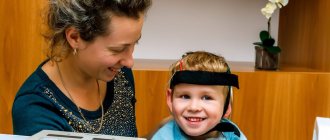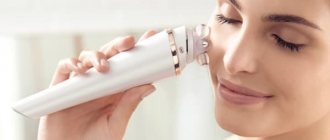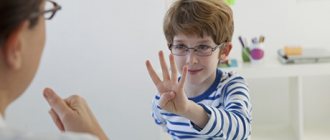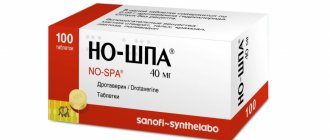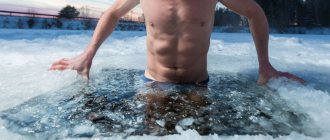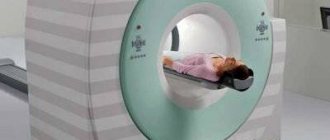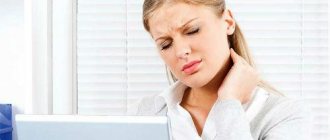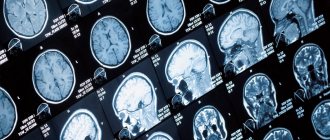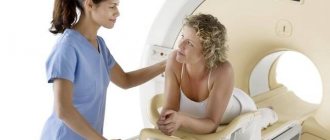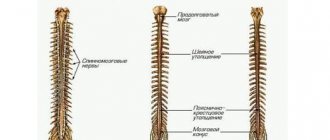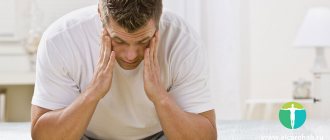Home » Useful » 7 types of reflexology - what it is and what it treats, cost and reviews
Author of the article
Agata Kozhukhova
Reading time: 9 minutes
AA
Modern medical methods involve the use of different means . Along with herbal medicine, reflexology, which originated in ancient China . How effective is the reflexology method?
Reflexology concept
This is a set of measures aimed at influencing the use of body points. By clicking on the desired point, the functionality of the diseased organ is restored. By influencing biologically active points, organs are stimulated with impulses . The impulses transmit a signal to the brain, after which the functioning processes in the affected organ are launched.
The organism, the human body, is a single biological system. If one of the functions is disrupted, the entire system suffers . During the research, points were found that, when acted upon, can quickly bring the body back to normal.
Distinctive properties of points:
- have increased sensitivity when exposed to pressure or electric current;
- the process of oxygen absorption increases;
- the process of micro-circulation of blood and lymph becomes active .
Despite the fact that the method is unconventional, it is recognized by official medicine. Acupuncture, the use of metal balls, warm stones, and laser beams are widely used.
Note! Reflexology can be prescribed as an independent method of therapy, or in combination with prescribed medications.
What is presbyopia in adults?
To understand what presbyopia is and how to treat it, you need to understand the mechanisms of accommodation of the eye. How does focusing on near and far objects work?
The process of accommodation involves the lens, ciliary muscle and ligament of Zinn. In order for a person to see objects clearly at different distances, the shape of the lens changes. When we look at distant objects, the ciliary muscle relaxes and the ligament of Zinn tenses. In this case, the capsule with the lens is stretched, the refractive power of the eye is reduced, and the light rays are precisely focused on the retina. If we turn our gaze to a nearby object, the opposite process will occur: the ligament of Zinn will weaken, the ciliary muscle will tense, and the shape of the lens will become more convex, thereby creating conditions for focusing.
Starting from 35-40 years, degenerative processes occur in the eyes, leading to “age-related farsightedness.” Then the question arises, what is presbyopia and how to treat it. According to research, there are several causes of presbyopia:
- loss of elasticity of the lens;
- change in lens curvature;
- weakening of the ciliary muscle.
As a result, the amplitude of accommodation decreases. Older people cannot focus their gaze on a nearby object. This condition in adults is called presbyopia of both eyes. The older a person gets, the more the point of clear vision moves away. If correction means are not used, it may appear at a distance of 1 m or more.
The disease has been well studied, and successful diagnostic and treatment algorithms have been developed. The ICD10 code for presbyopia is H52.4.
History of appearance
There is no exact data on the time of occurrence. The origins of acupuncture go back to antiquity . Back then, needles were used as healing methods. To get rid of pain, a person instinctively tries to press on the point . Thus, points that could be influenced gradually began to be identified.
Archaeological excavations indicate that stone, bone and bamboo needles were used in ancient times.
The birthplace of reflexology is China . In Europe, the method began to be used only in the 17th century. On the territory of the USSR, acupuncture was recognized in 1957 during the exchange of experience with Chinese doctors. Acupuncture originated in Tibet. Then it began to be used in Nepal and India. From Japan and China, the method quickly spread to the countries of the East - Mongolia, Korea.
A new stage in the development of the technique began in 1949. They began to study the technique in more depth and develop a scientific basis for the actions of doctors.
Now there are a huge number of monographs on the topic, even two research institutes have been created - the “Institute of Pain Control”, the second in Tokyo.
The method came to Europe in the 17th century , and was spread by missionaries. In 1978, a unified reflexology program was created for advanced training institutes for doctors. In the 90s, acupuncture experienced a heyday, and since 1998, the specialty of a reflexologist has been included in the register of medical specialties.
Types of reflexology
When using different methods of reflexology, you can slow down or speed up the movement of energy that is in the affected organ. When choosing a method, pay attention to which organ is damaged and how deep the damage is.
Types of reflexology:
| Types of treatment | Description |
| acupuncture | An effective technique that directly depends on the angle at which the needle is inserted. Has a calming, tonic effect. Small needles can be left in the skin for several days |
| auriculotherapy | Acupressure of active points of the auricle. There are more than 250 points on the sink. Normally, they are painless; pressing on the points may cause pain. If there is a chronic disease, then diaper rash and pain appear at the active point. |
| acupressure | Mechanical impact on the points using a finger or special medical instruments. The integrity of the skin is not compromised. |
| thermopuncture | Use of heat. Wormwood cigars are used for this purpose. |
| electropuncture | Application of electric current |
| microcurrent | Used as an independent method. Often used to treat children with cerebral palsy. |
| magnetopuncture | Exposure to magnetic field. Relieves pain in chronic diseases |
Note! The method is prescribed by a specialist after studying the patient’s medical record. The patient cannot independently choose the direction of treatment.
How it works
All methods of reflexology are based on the impact on sensitive points of the body, called acupuncture points, which differ in the nature, strength, and duration of the therapeutic effect.
An acupuncture point is an area of the human body with an area of 1 to 10 mm, which has a number of features. The tissues of these zones have increased blood circulation and lymph flow, they absorb oxygen more intensively, and are distinguished by the special structure of their nerve fibers and vascular network. It has been established that the bioelectric characteristics of acupuncture points of a healthy and sick person differ.
Such areas can be located on the skin, muscles, subcutaneous tissue, etc. Today, experts know approximately 700 such points distributed over the surface of the human body. Most of them are concentrated in the area of the head and limbs.
People have acupuncture points from birth; they are located in a strictly defined order, the same for everyone, along conventional lines called meridians. There are 14 such meridians in the human body, interconnected into a single functional-energy network.
As medical practice shows, already 5 minutes after irritation of an acupuncture point, a restructuring of intracellular metabolic processes begins, and the number of leukocytes in the blood changes.
The effectiveness of the methods used by a doctor of this specialization is based on the interaction of 3 factors.
- Place of influence - selection of the desired acupuncture point.
- Method of influence . Irritation of the same active zone can have a different effect when choosing different methods of influence, which can be inhibitory or excitatory in nature.
- The moment of irritation , selected not only in accordance with the type of disease, but also taking into account all pathological manifestations, as well as the biorhythms of the patient’s meridians.
Taking into account the listed factors means the individualization of reflexology treatment, as it implies a refusal to use standard approaches and the development of treatment tactics depending on the individual characteristics of the patient’s body.
to contents ^
Indications and contraindications for use
Despite all the positive aspects, there are a number of contraindications that are worth paying attention to. It is prohibited to use:
- oncological diseases, benign tumors;
- mental instability;
- pregnancy;
- infectious and inflammatory diseases;
- tuberculosis , its open form.
Note!
The main contraindication is intolerance to substances that are administered when using the techniques. The doctor makes appointments taking into account medical procedures that may put the body at risk. It is prohibited to use the technique if a strip operation was performed.
Among the positive effects are:
- relieving pain;
- restore joint mobility;
- normalize sleep;
- restore metabolic processes;
- stabilize the state of the vegetative-vascular system.
Many patients experience positive dynamics only if complex treatment is prescribed.
See photo gallery:
What diseases does a reflexologist treat?
This doctor is a universal specialist; his therapeutic methods are used in complex therapy of a large number of diseases. Therefore, doctors of various specialties often advise patients to consult a reflexologist.
As medical practice shows, reflexology is effective primarily in the treatment of functional pathologies that arise due to failures in the nervous regulation of organs and systems.
The assistance of a doctor of this specialization will be useful in the complex treatment of the following ailments:
- Dysfunctions of the nervous system: multiple sclerosis, neuralgia, paresthesia, neurosis, stuttering, enuresis, neuritis.
- Sexual disorders.
- Consequences of traumatic brain injuries, cerebrovascular accidents, strokes.
- Treatment of addictions: alcoholism, substance abuse, drug addiction, smoking cessation.
- Hypertonic disease.
- Ophthalmological ailments: blepharitis, conjunctivitis, optic neuritis, glaucoma, retinal degeneration, myopia, etc.
- Gynecological pathologies: premenstrual syndrome, menstrual irregularities, some types of infertility, negative symptoms during menopause, dysmenorrhea and hypermenorrhea.
- Pathological conditions of the musculoskeletal system: vertebral osteochondrosis, scoliosis, polyarthritis, arthrosis, etc.
- Respiratory diseases: bronchitis, tracheitis, pneumonia, etc.
- Pathologies of an allergic nature: bronchial asthma, allergic rhinitis, urticaria, Quincke's edema.
- Digestive pathologies: dyspepsia, gastritis, gastroenteritis, gastric ulcer, constipation, esophageal stenosis, intestinal colic, gastric atony, chronic pancreatitis, etc.
- Diseases of the ENT organs: rhinitis, laryngitis, sinusitis, pharyngitis, etc.
- Diseases of the excretory system: pyelonephritis, urethritis, cystitis.
- Cardiovascular diseases: phlebitis and thrombophlebitis, arterial hypertension and hypotension, vascular atherosclerosis, varicose veins, angina pectoris, heart rhythm disturbances, etc.
- Rheumatoid arthritis.
- Endocrine disruptions: obesity, hypothyroidism.
- Diseases of the male reproductive system: prostatitis, aspermia, male infertility.
- Pathological conditions of the skin and hair: alopecia (baldness), dermatitis, acne, eczema, psoriasis, furunculosis.
Reflexology is used for anesthesia in situations where pain relief with medications is undesirable due to the high likelihood of allergic reactions, prolonged pain, and individual intolerance. As an anesthetic method, it is often used in the postoperative period, in some dental and otolaryngological interventions.
Reflexology methods are also applicable to healthy people to improve performance, support the body during periods of increased demands placed on it and stimulate natural defense mechanisms.
Reflexology not only helps fight the manifestations of specific ailments, but also heals the body as a whole, increasing its resistance to adverse factors.
to contents ^
Negative consequences
Before making appointments, you should find out the patient’s tendency to allergic reactions and check their health status .
Common negative effects are:
- the appearance of a headache ;
- the appearance of pallor on the skin;
- the appearance of tingling in the area where needles were previously installed;
- nausea;
- weakness;
- the appearance of hematomas after the manipulations.
Reflexotherapy treats diseases of varying severity , providing a prolonged effect. It is used after chemotherapy and can be used in patients of any age.
You can undergo reflexology treatment programs at the sanatoriums of the Ministry of Defense:
- Sanatorium "Divnomorskoe"
- Sanatorium "Solnechnogorsk"
- Sanatorium "Slobodka"
- Sanatorium "Cote d'Azur"
- Sanatorium "Gold Coast"
- Sanatorium "Borovoye"
- Sanatorium "Molokovsky"
Cost of the procedure
The cost depends on which method was prescribed to the patient.
- acupuncture - 950-2000 rubles. At least 10 sessions are required ;
- use of an electrical impulse - 2000 rubles. ;
- acupuncture for weight loss 500 -2000 rub. ;
- for infertility - 1300 - 2100 rubles. ;
- from smoking - 1000 rubles.
Note! The price is indicated for one visit. Minimum quantity of 5 or more.t
Reflexotherapist working with children
Relative safety and a minimum of contraindications make reflexology acceptable in the treatment and prevention of ailments in children.
The help of a reflexologist in childhood will be useful in the following situations:
- High nervous excitability, restless sleep.
- Recurring colds.
- Digestive problems.
- Allergic manifestations (atopic dermatitis, urticaria, bronchial asthma, allergic rhinitis).
- Stuttering.
- Enuresis.
- Delayed speech, mental, physical development.
- Vegetovascular dystonia.
- Acne in adolescence.
When working with young patients, the reflexologist uses gentle methods: magnetic therapy, ball therapy, acupressure.
If acupuncture is necessary, special children's needles are used for it - short and thin. The discomfort experienced by the child when using them is usually insignificant, and they disappear within a minute after the start of the session.
During the procedure, an experienced specialist always tries to make sure that the little patient does not experience unpleasant emotions: he will turn on a cartoon and tell an entertaining story.
A treatment session for children takes from 5 to 20 minutes. A children's reflexology course on average includes 10 consecutive procedures performed at intervals of 1-3 days.
to contents ^
Benefits of treatment
The benefits are obvious. It can be prescribed both for ordinary ailments and for serious diseases - back, migraine, premenstrual syndrome.
It also helps determine the presence of an impending disease. Once the danger is determined, the required number of sessions is prescribed.
If treatment is carried out regularly, the patient can maintain his health.
Note! The techniques can be used at home, but only to achieve a relaxing effect.
